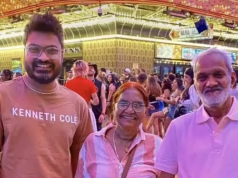Importance of ‘Republic’
Republic, a latin word which stands for a sovereign state, country or government and the only word which isolates India from other countries as it is world’s biggest sovereign nation. This can be well described with Abraham Linken’s quote- Government of the people, by the people, for the people. In a republic nation, people rule on people as the system we follow for choosing our leaders through direct voting.
The direct voting system could also be used as the transparent government and as a republic nation we use is at every level from-Panchayat to Parliament.
 The illuminated Raisin Hill ahead of the Republic Day celebrations in New Delhi. (PTI)
The illuminated Raisin Hill ahead of the Republic Day celebrations in New Delhi. (PTI)In other manners, ‘Republic’ allows you to move freely, eat freely, do whatever you want even follow a religion without any obstruction. So, think how important is ‘republic’ for us.
History behind Republic India
On August 15, 1947, when India got independence after an approximately century-long ruling by Britishers or British government, it was almost meaningless for us in absence of a particular constitution. Though the British had declared India as an independent country but there was a challenge to run the administration. So, we had adopted the Britain’s constitution on a temporary basis but the need of own Constitution still arose.
After a meeting of different committees, a drafting committee was formed under the chairmanship of Dr Bhim Rao Ambedkar, the chief architect of the Constitution of India. Thereafter, the committee had prepared a draft constitution and submitted it to the Assembly on November 1947, but it took more than two to give it the final touch amid debates and amendments. Finally, on 26 November 1949, the process was completed and the Constituent Assembly adopted the Constitution.
 Soldiers take part in a full-dress rehearsal for India’s Republic Day parade in Bengaluru. (Reuters)
Soldiers take part in a full-dress rehearsal for India’s Republic Day parade in Bengaluru. (Reuters)Some rare facts about constitutions:
Originally, the Constitution of India was a handwritten document by Prem Behari Narain Raizada in a flowing italic style with beautiful calligraphy. Each page was beautified and decorated by artists from Shantiniketan.
A total of 283 members of the constituent assembly signed the constitution.
Two years, 11 months and 17 days, was the time that constitution committee had taken to prepare the entire document.
The Constitution of India is the longest constitution in the world because of its handwritten uniqueness with 25 parts containing 448 articles and 12 schedules.
Popularly known as “Father of Indian Constitution”, Dr BR Ambedakar or Baba Saheb was the first law minister of independent India. He was also an economist and can be dignified as the biggest social reformer of the country.
The day constitution was signed, it was raining cats and dogs outside the parliament, which was considered to be a good omen by the assembly members.
Only a few people know that the date 26th January was specially chosen to announce the India as the republic because it is the anniversary day of “Purna Swaraj Diwas” (26th January 1930). This was the day when congress seeded the fight for complete Independence and hoisted the Indian flag.
 A young street hawker sells Indian tricolor flags at a traffic intersection ahead of the Republic Day in New Delhi. (AP)
A young street hawker sells Indian tricolor flags at a traffic intersection ahead of the Republic Day in New Delhi. (AP)The original hand-written copies of the Constitution are still kept in helium-filled cases in the Library of Parliament House.
The Indian national flag, with tri-color and the chakra in the middle, was conceptualised by Pingali Venkayya, a farmer from Machilipatnam (a city in the southern state of Andhra Pradesh).
‘Ashok Chakra’ in the present tri-colour has 24 spokes and 12 represent 12 casual links taught by Gautama Buddha and other 12 in reverse represent a total of 24 spokes of ‘dharma’.
Source: www.financialexpress.com







